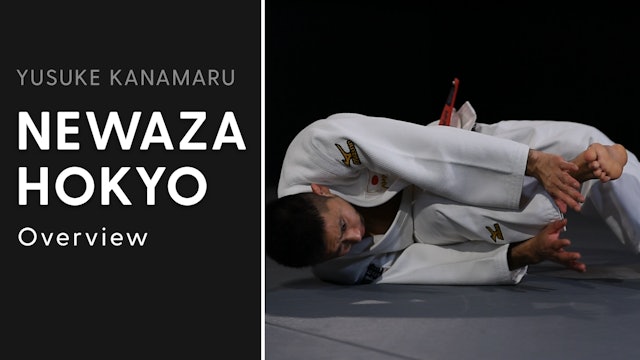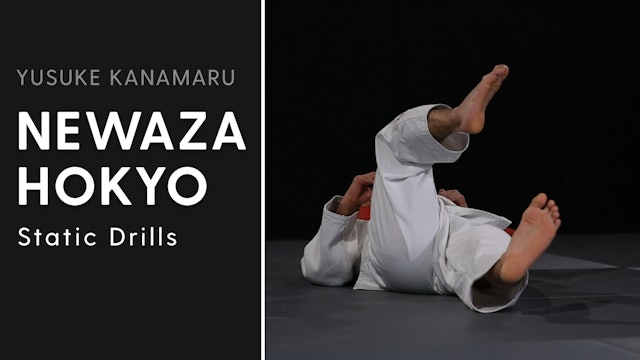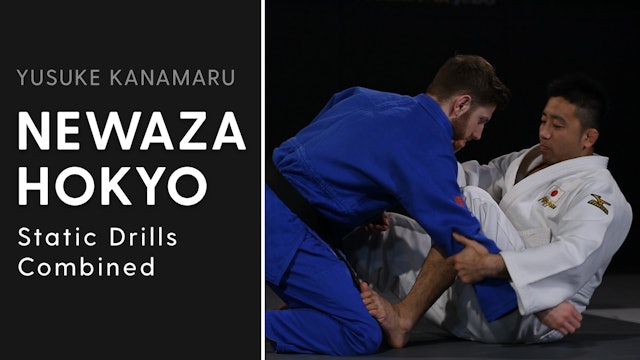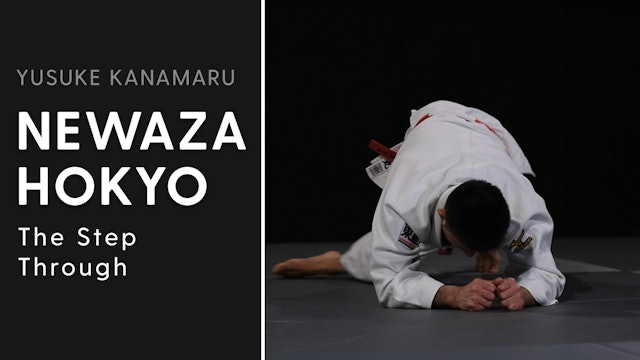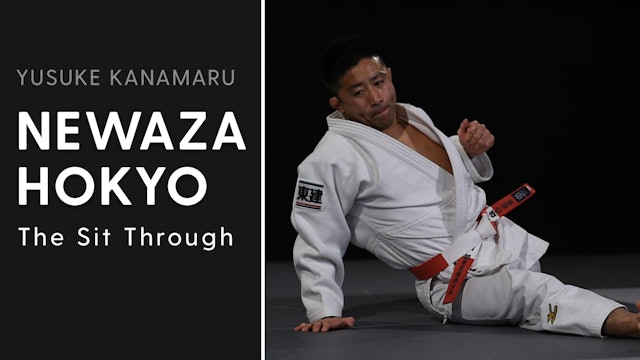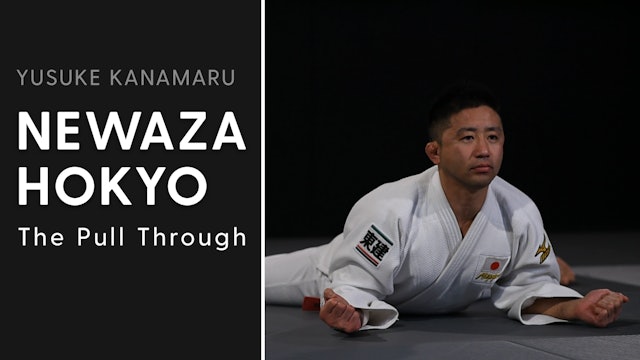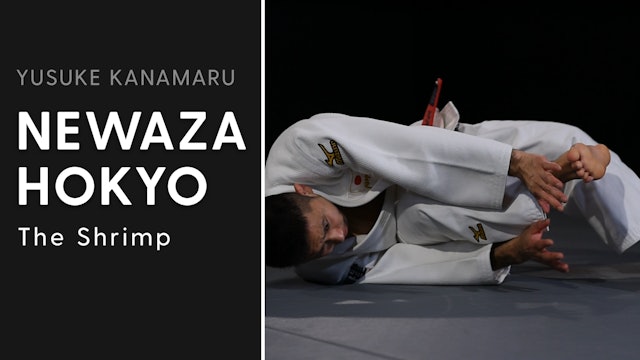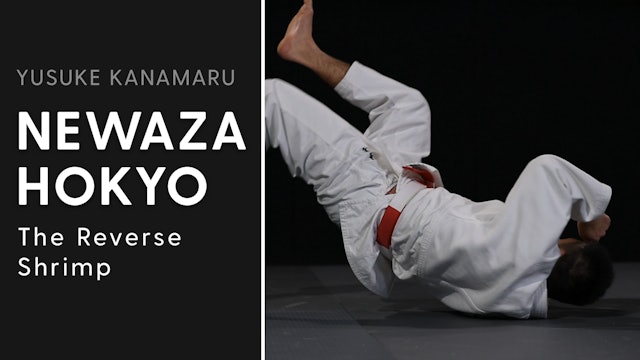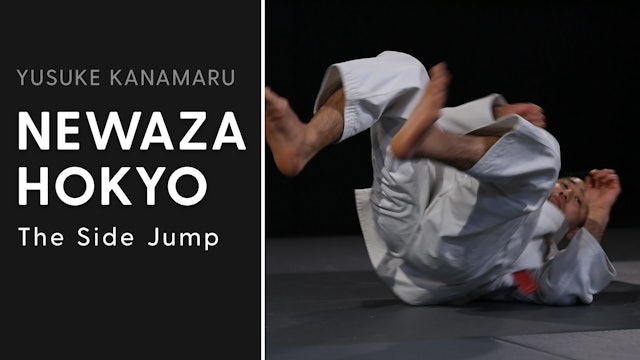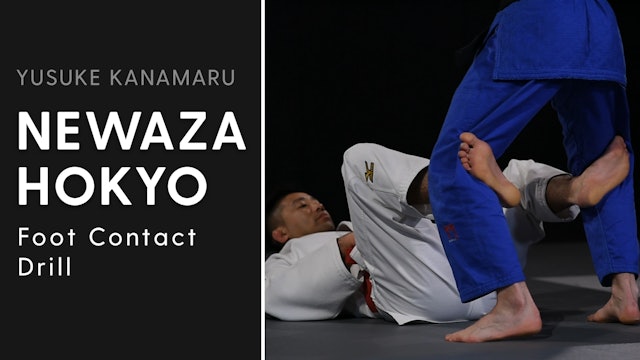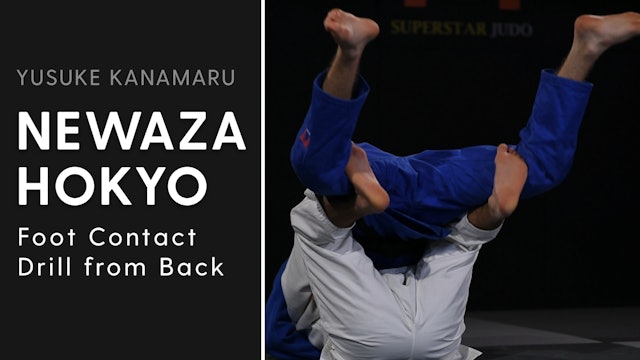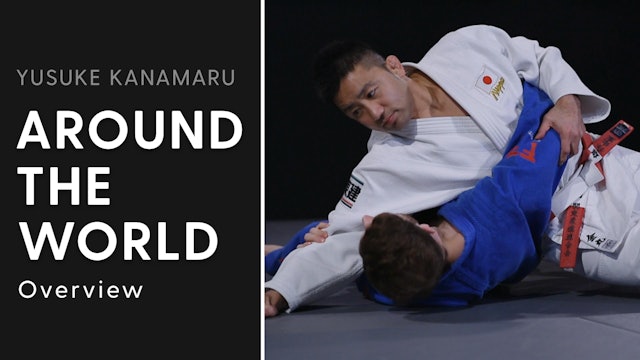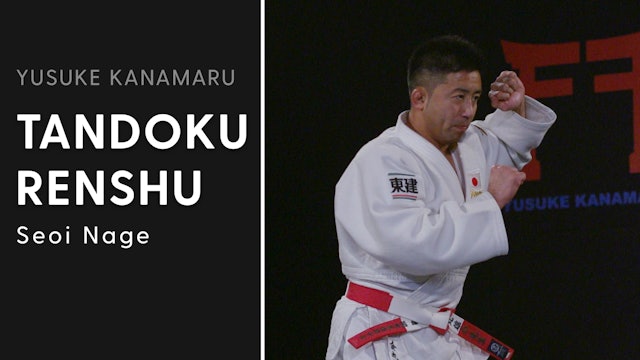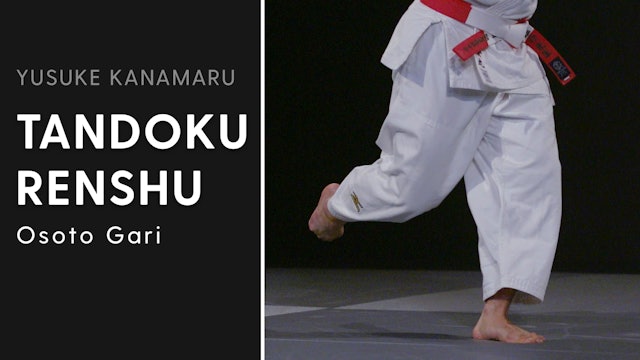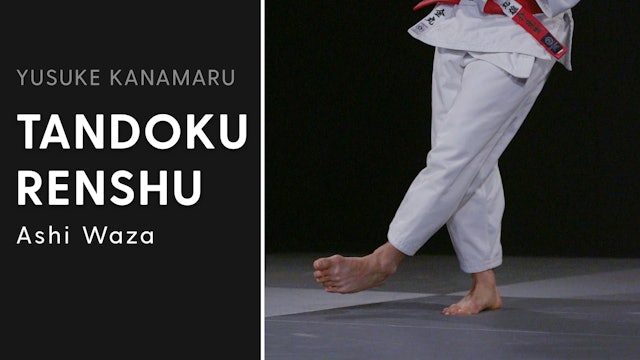Yusuke Kanamaru
7 Seasons
Former double World medalist, and now coach to 2016 Olympic and Double World Champion Shohei Ono, Yusuke Kanamaru is now on Fighting Films+ to teach you how to become a better judoka.
Kanamaru's excellent range of Ne waza exercises are a great way to start improving your groundwork today.
-
Overview | Newaza Hokyo | Yusuke Kanamaru
Episode 1
Translated directly as ‘reinforcement' - in Judo, ‘Hokyo’ involves repeating fundamental movements in order to commit them to your body's memory. Highly valued by Kanamaru - you can improve your Judo with or without a partner. ‘Newaza Hokyo’ reinforces important movements and postures used throug...
-
Static Drills | Newaza Hokyo | Yusuke Kanamaru
Episode 2
Here are four static movements that are important for successful Newaza. All are performed from your back with your head up, to engage your core.
-
Static Drills Combined | Newaza Hokyo | Yusuke Kanamaru
Episode 3
Once competent, these exercises can be linked together into a sequence. You can then apply it to a Judo related situation. Here, Kanamaru demonstrates how to perform the sequence.
-
The Step Through | Newaza Hokyo | Yusuke Kanamaru
Episode 4
There is a lot of twisting in Newaza, so this is an exercise Kanamaru thinks is very important. Starting in a prone plank, you suspend your body weight on your forearms and toes, keeping your core tight and back straight.
-
The Sit Through | Newaza Hokyo | Yusuke Kanamaru
Episode 5
The ‘sit through’ is an expansive yet precise movement. Starting in a prone position, with relatively straight arms, you support your weight on your hands, with your hips a little higher than your shoulders. As it is so expansive, it requires a great deal of control.
-
The Pull Through | Newaza Hokyo | Yusuke Kanamaru
Episode 6
The first drill relates to Kami shio, and Yoko shio gatame. Lying on your front with your legs wide, you reach forward as far as possible - then pull yourself forwards. It’s very important that for the end posture: your hips are down and your chest is up. You must force your weight through your f...
-
The Shrimp | Newaza Hokyo | Yusuke Kanamaru
Episode 7
The shrimp, or in Japanese ‘ebi’, reinforces a fundamental movement in Newaza. It is used to create distance between yourself and your opponent, allowing space to either defend or attack. This exercise imitates pushing your opponent away to create the space needed to defend or attack.
-
The Reverse Shrimp | Newaza Hokyo | Yusuke Kanamaru
Episode 8
Apart from being more explosive, the main difference between the normal and reverse shrimp is that instead of pushing yourself along the tatami, you use your feet to pull. Starting on your side, you drive your top foot down into the tatami, exploding upwards with the hips and using the momentum t...
-
The Side Shuffle | Newaza Hokyo | Yusuke Kanamaru
Episode 9
This side shuffle is another fairly simple, but a fundamental movement for Ne Waza. You start on your back, leaning your legs and hips to one side, with your arms and shoulders turned the other way. The aim of the movement is to switch your hips and shoulders, finishing in the opposite position. ...
-
The Side Jump | Newaza Hokyo | Yusuke Kanamaru
Episode 10
The side jump is very similar to the side shuffle, however, in this exercise, both your upper and lower body start facing the same direction. You kick up with your legs and hips and completely leave the tatami, rotating your body mid-flight to land on the opposite side. It’s a short, explosive ex...
-
Foot Contact Drill | Newaza Hokyo | Yusuke Kanamaru
Episode 11
This drill is about maintaining control of your opponent at any given moment in Newaza. Lying on your back, core tight, holding your head off the tatami, you hook your feet in. Executing a kind of cycling motion, you move your partner’s legs back and forth. Although Uke must jump slightly, it is ...
-
Foot Contact Drill From Back | Newaza Hokyo | Yusuke Kanamaru
Episode 12
Kanamaru says the most important thing about this drill, is to maintain complete control of your opponent. You must keep tension throughout the exercise.
-
Overview | Around The World | Yusuke Kanamaru
Episode 13
Yusuke Kanamaru teaches you the "Around The World" drill for improving your osaekomi transition.
-
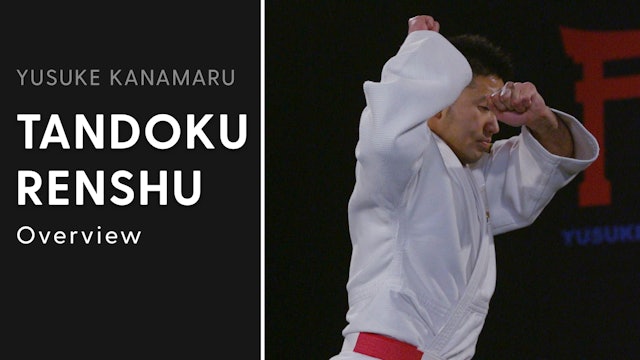 01:01Episode 14
01:01Episode 14Overview | Tandoku Renshu | Yusuke Kanamaru
Episode 14
Tandoku renshu is translated as independent practice. Also known as ‘shadow uchi-komi’, It’s a unique and useful tool to have in your Judo armoury, as you can work alone, without a partner.
Tandoku renshu can be used for warming up, or for coaches to check posture and technique. It is particula... -
Seoi Nage | Tandoku Renshu | Yusuke Kanamaru
Episode 15
Here is Tandoku renshu for seoi-nage. Kanamaru imitates the full movement as done with a partner as closely as possible, pausing between each repetition to ensure he has finished in the correct posture. In the final position, you should be standing firm on the tatami, feet in line and shoulder wi...
-
Osoto Gari | Tandoku Renshu | Yusuke Kanamaru
Episode 16
There are two variations of tandoku renshu for osoto-gari, both requiring great focus on balance. The dynamic nature of osoto means it cannot be completed in a stationary position, but is performed on the move, in a line down the tatami. The more basic of the two variations involves taking a coup...
-
Ashi Waza | Tandoku Renshu | Yusuke Kanamaru
Episode 17
The practice of tandoku renshu helps improve timing, an essential component for ashi-waza. As shown here, you must maintain an upright posture and turn the sole of your sweeping foot inwards. This creates the necessary tension in your leg and allows you to comfortably catch the foot you’re attack...
-
Overview | Games & Principles | Yusuke Kanamaru
Episode 18
In this series, Kanamaru introduces several simple games that can be employed by coaches to reinforce some of the fundamental and underlying movement principles within judo.
Where applicable, Kanamaru also demonstrates how the principles learnt from each game relate directly to Judo specific sit...
-
Hand Balance Game | Games & Principles | Yusuke Kanamaru
Episode 19
The hand balance game teaches judoka how they can benefit from an opponent's action or reaction in a competitive situation.
It develops balance, decision making and reaction speed. Both judoka adopt a natural posture with their feet shoulder width apart, back straight, and head up. It's importan...
-
Side Balance Game | Games & Principles | Yusuke Kanamaru
Episode 20
The side-on balance game teaches Judoka to understand the directions in which an opponent may be weak due to their stance and foot positioning. Players learn how to manipulate the balance of their opponent whilst always attempting to maintain their own. It also tests their tactical guile and reac...
-
Ayumi-ashi & Tsugi-ashi | Games & Principles | Yusuke Kanamaru
Episode 21
Here Kanamaru demonstrates two different stepping patterns; ayumi-ashi on the left and tsugi-ashi on the right. At first glance, they may not look too different, but for judo tsugi-ashi is a much more functional way to move around the tatami. It is very important that judoka know the difference b...
-
Fencing Game | Games & Principles | Yusuke Kanamaru
Episode 22
To develop the tsugi-ashi stepping pattern you can play the fencing game. See the previous video for a detailed explanation on tsugi-ashi versus ayumi-ashi
To set up the game players stand at a join between two tatami, which acts as a line to play the game along. They face in opposite directions...
-
Belt Game | Games & Principles | Yusuke Kanamaru
Episode 23
This simple but effective game reinforces the techniques of kuzushi or breaking an opponent's balance. It focuses on using whole body movements led by the hips and utilizing body weight to initiate movement
Using a belt players position it around their hips creating an S shape, ensuring they hav...
-
Rock, Paper, Scissors | Games & Principles | Yusuke Kanamaru
Episode 24
Adapted from its popular namesake, this game is great for warming up both body and mind prior to training or competition.
The difference here is that players signal their moves with their feet. Standing with legs together represents rock. Legs apart equals paper and legs split to front and back ...



